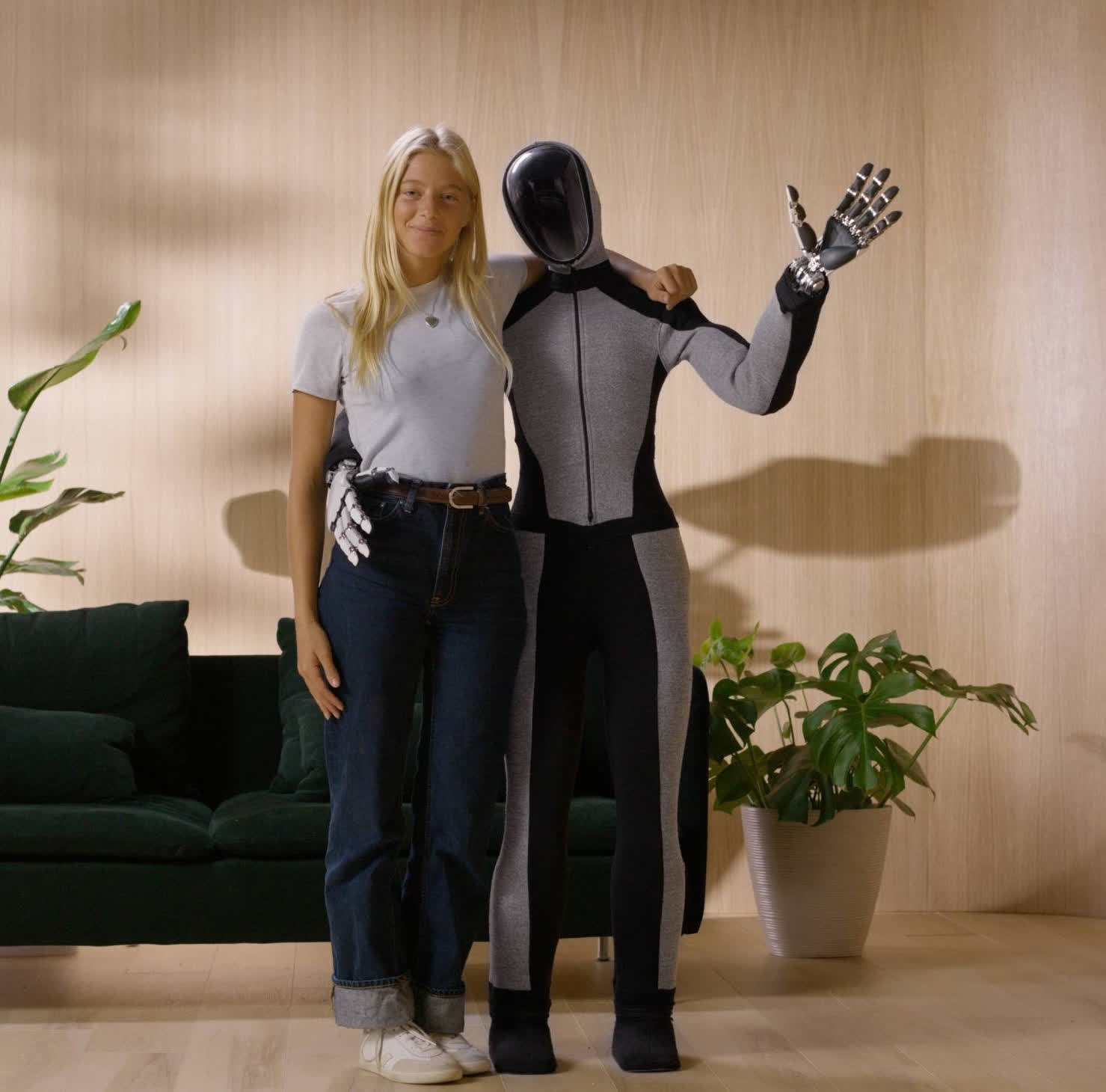The big picture: A robotics firm just unveiled its latest bipedal humanoid robot. It designed the faceless, jumpsuit-clad humanoid robot as a consumer-grade model explicitly built for home use. Despite it’s unccanny valley creepiness, it could soon land in some homes for pilot trials later this year.
Robotics company 1X Technologies (1XT) made headlines earlier this year after securing over $100 million in backing from OpenAI and EQT Ventures, Europe’s most prominent technology startup-based capital fund. The support helped to put the Norwegian firm and its latest robot creation, Neo, in a position to compete with industry names such as Tesla, Agility, and Boston Dynamics.
Designed from the ground up as a consumer-focused robot, 1XT’s Neo is substantially smaller and lighter than Tesla’s Optimus and Agility’s Digit robots. The robot stands at 5 feet 4 inches (1.65 meters), weighs 66 pounds (30 kilograms), and boasts a 44-pound (20-kilogram) carrying capacity. By comparison, Tesla’s and Agility’s robots offer a similar carrying capacity at over twice the weight – 125 to 140 pounds (56.5 to 63.5 kilograms).
Introducing NEO Beta.
Designed for humans. Built for the home. pic.twitter.com/5S6jpRjUQp– 1X (@1x_tech) August 30, 2024
Engineers designed Neo with soft foam resembling human musculature to make it look more human. Neo can walk, jog, climb, and navigate the environment around it while continuously using accumulated data to improve efficiency. Should the situation arise, owners can take over Neo’s vision and control systems for remote operation anytime.
Aside from looking more human, the use of foam musculature and differences in weight compared to its rivals are an intentional design choice that 1XT pursued in the name of safety. The company acknowledges that robots will inevitably collide with humans and the environment around them. So, the lighter weight and padded frame will minimize injury and physical damage should a collision occur.

The concept is an exciting development in consumer robotics. However, the presentation and “what could go wrong” factor bring several questions to mind.
The ability to remotely control the unit immediately raises the question of security. How hardened is the remote connection between the robot and the controller? Could the unit be “hijacked” and used to carry out spying or other illegal acts with no trace of human evidence?
There is also the uncanny valley factor. Encountering a faceless humanoid in a tight-fitting hooded jumpsuit in the middle of the night while you are still half asleep is a heart-attack-inducing thought.
Trepidations aside, the technology marks another exciting step toward AI and robotics capable of supporting daily life, especially for those users with decreased mobility or motor skills. A availability and price are still unknown, but those interested should sign up for notifications via the 1X Technologies website.
